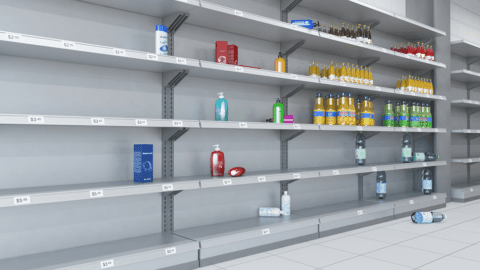Retailers must keep pace with consumers’ demands to provide a compelling and informative customer experience ― while closely balancing those demands with precise inventory levels.
Surprisingly, retailers lose $818 billion annually worldwide due to out-of-stocks and deeply discounted overstocks, according to a report released by IHL Group, a research and advisory firm. Even more alarming, the report said, this statistic is increasing by nearly $50 billion annually worldwide as emerging economies expand beyond the infrastructure to handle retail growth efficiently.
On May 7, 2012, IHL released these findings in its 2nd Annual Inventory Distortion study, sponsored by Tyco Retail Solutions. IHL Group defines inventory distortion as the combined cost of out-of-stocks and lost sales, and overstocks that retailers must discount deeply to sell.
IHL’s President, Greg Buzek, discussed key points of the inventory distortion study in a recent webinar titled, “Inventory Distortion ― Retail’s $800 Billion Global Problem.” These key points included:
- Out-of-Stocks make up 56% of the $818 Billion figure, or $456.3 Billion.
- Overstocks account for the remaining 44%, or $362.1 Billion.
- Worldwide, nearly $1.5 trillion of merchandise annually is in an overstock position that creates a loss in revenue.
The study defined out-of-stocks as any situation wherein a consumer enters a retail setting with the intent to buy a specific item and does not. Overstocks were defined as any situation wherein a retailer has on hand more stock of a particular item than is supported by current demand.
Research from this study indicates that inventory distortion is not caused simply by a lack of systems but rather by internal challenges among people and processes as well as external supplies.
Of the $818 billion total global loss, IHL estimates only approximately $366 billion is addressable with a technology, business process or training solution. Nearly $200 billion of that addressable loss is caused by internal process or training issues that lead to merchandise either not making it to the shelves in time or the company having too much of what it cannot sell without pricing for clearance.
According to the report, North America is the most technically mature region, yet 54% of its contribution to inventory distortion ($167.6 billion) is due to out-of-stocks.
The Asia/Pacific region, which is home to more than 56% of the world’s population, contributes 40% of all inventory distortion, or $327.5 billion ― increasing almost $24 billion in one year. “The issue in this region is the lack of infrastructure, which causes 40% of its produce to not make the shelves,” said Buzek.
More Retailers Spending On Mobile To Access Real-Time Inventory
Retailers are shifting their marketing budgets to mobile devices and placing inventory control in the hands of in-store employees, according to Buzek. “Large retailers are going negative on IT spend,” he said. “The money is going towards mobile for associates, consumers (mobile apps) and cross-channel integrations. In fact, most (73%) of specialty stores said they’ll be arming their store associates with mobile devices.”
By adding mobile technology to physical stores, store managers and associates have access to real-time inventory, and can provide shoppers with accurate inventory information. Most shoppers are relatively forgiving when it comes to out-of-stock items, particularly promotional items, as indicated in the report. However, cross-channel inventory inconsistency is a pain-point many customers face when shopping online for pickup in the store. As a result, 33% of respondents said they would never shop at that store again, while 41% said it depended on whether there were any alternative stores nearby.
Data for the report was obtained by applying IHL’s research and algorithm tools to widespread retailer and consumer interviews and studies.












